Photographs by John Salmon, text by Jacqueline Banerjee. You may use the images without prior permission for any scholarly or educational purpose as long as you (1) credit John Salmon and (2) link your document to this URL in a web document or cite the Victorian Web in a print one. Click on the images to enlarge them.

The High Altar, very elegant with panels of different shades and patterns of grey marble, with gilding used sparingly for highlighting the rising levels and to emphasise the Alpha and Omega at each side. There is a refinement in the All Hallows' fittings that offsets the large and solid architectural features of the church building itself. The marble floor tiles complement the altar perfectly.




Left to right (remember to click to enlarge these): (a) The delicate sanctuary lamp. (b) The north side of the sanctuary. (c) The south side of the sanctuary, showing the other one of a pair of intricately turned candlesticks. (d) The incense boat and thurible, also good examples of the finely crafted metalware here.
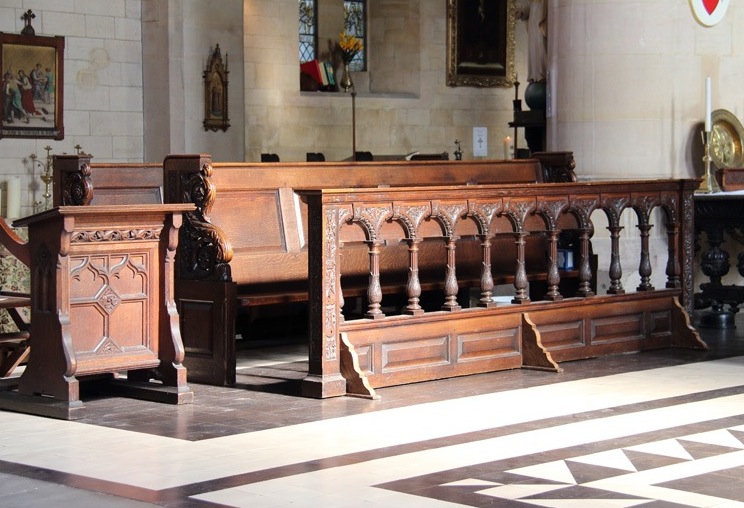
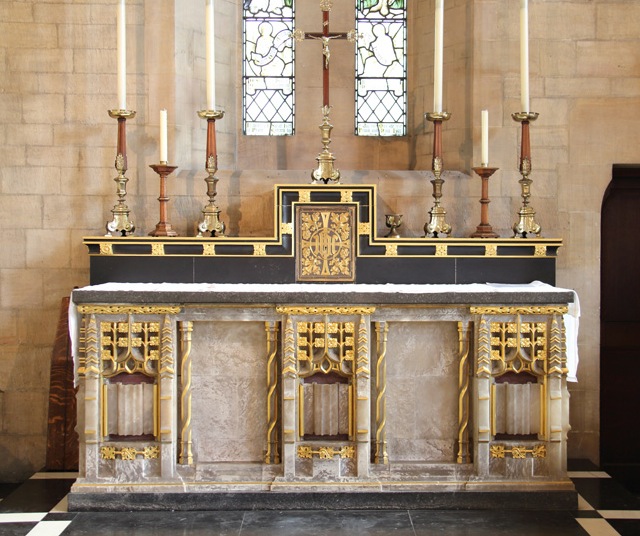
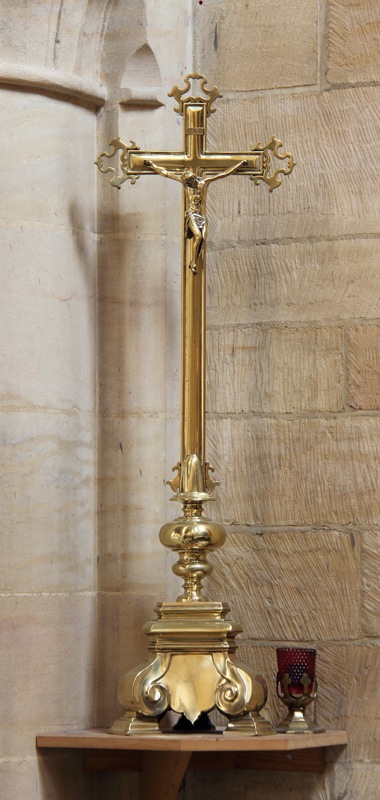
Left to right: (a) The chancel, with the choir-stalls. (b) The altar in the north chapel, more elaborately ornamented and gilded than the high altar (this often seems to be the case). (c) An altar cross, well placed so as not to seem lost in the spacious church.
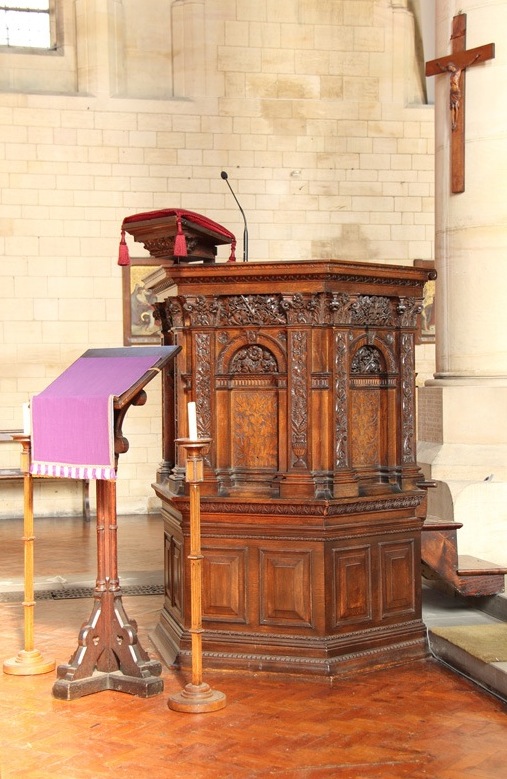
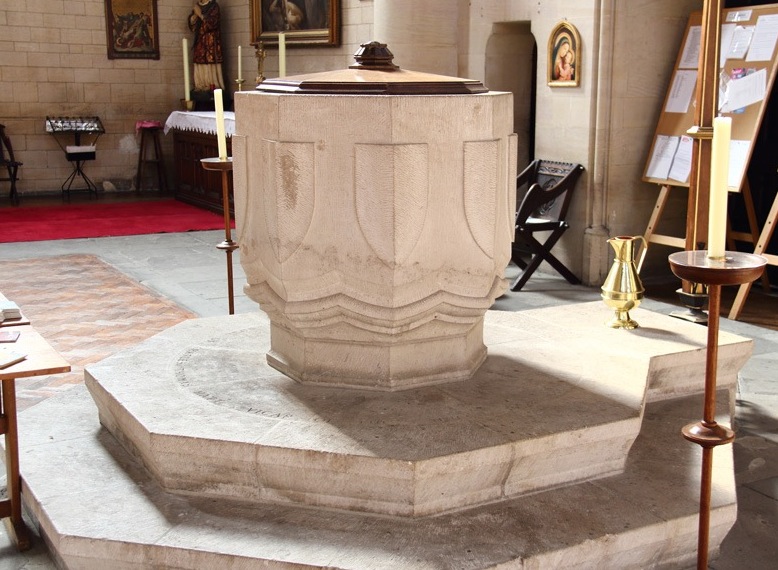
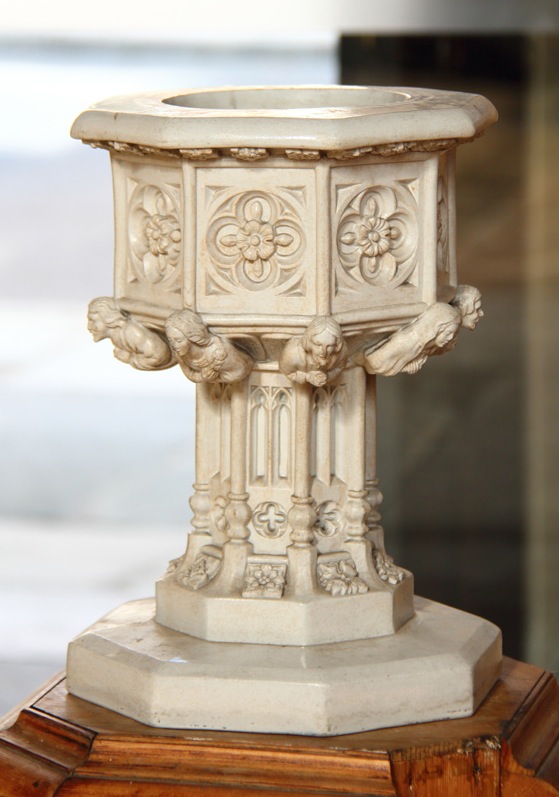
Left to right: (a) The pulpit [see here for a close-up of the fine craftsmanship in the carving]. (b) The substantial font, with the clean lines found elsewhere. (c) A miniature font, a nod to the past reminding us of more traditional church fittings: praying figures lean out at the base of the bowl.

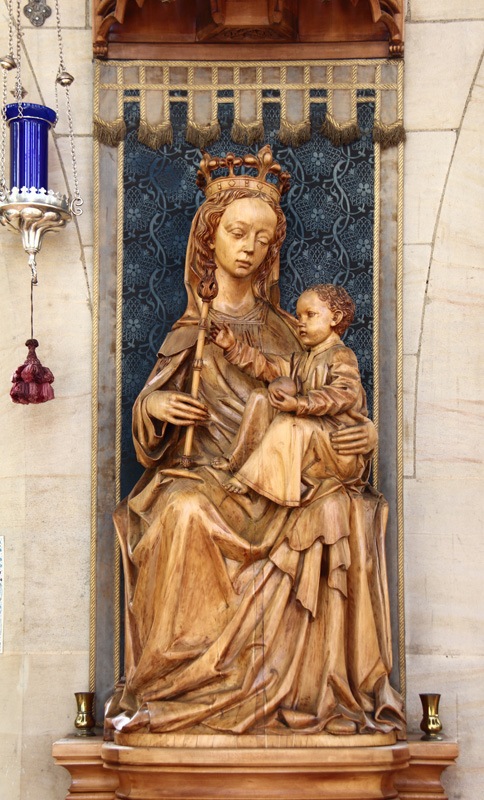

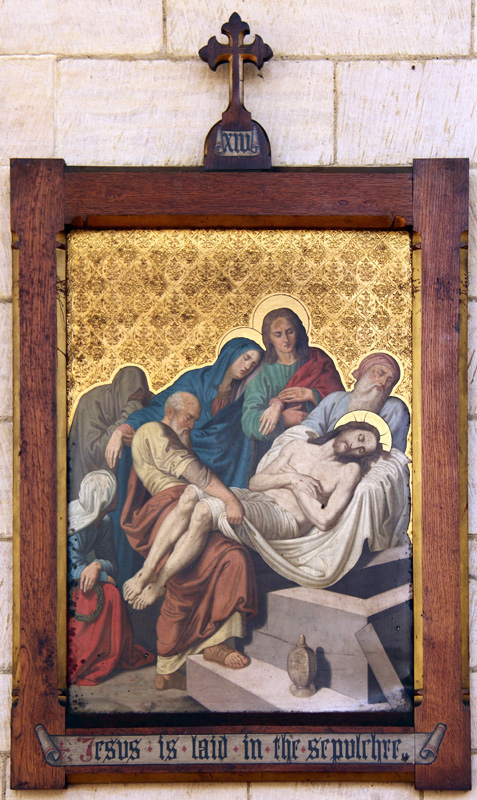
Left to right: (a) Another historical piece — a Gothic, Germanic-looking shrine to the south of the nave. (b) Close-up of the sculptural work. Belgian work was also often found in the late 19c and early 20c. (c) The second station of a fine set of Stations of the Cross. This one is the second: "Jesus receives his cross." (d) The thirteenth: "Jesus is laid in the sepulchre."
There are some useful descriptions of church fittings in J. Charles Cox and Alfred Harvey's English Church Furniture (1907). For example, Cox explains that "Among the metal or plate vessels chiefly associated with the altar are the two employed in censing, the thurible, or censer, and the incense boat or ship" (51); or:
A perpetual lamp burned, as a rule, night and day before the high altar in all the larger and more wealthy churches, as early as the 13th cent. The continual light of the sanctuary lamp, in honour of the reservation of the Blessed Sacrament, is continuously referred to in charters, inventories, and church accounts from the I3th to the 16th cents. [321]
Pugin is only mentioned once in passing (in connection with his Glossary, on p. 96); his influence had waned, as had High Victorianism and the Byzantine Revival of the later nineteenth- and early twentieth-century. Pugin might say that something (in this case, a crozier) is "simple but beautiful" (107; emphasis added), but is more likely to admire something (in this case garlands made of precious ornaments) for being "both rich and beautiful" (147; emphasis added). Cox and Harvey however use the word "simple" unequivocally as a term of praise, sometimes in conjunction with "elegant": "a very simple and elegant stone pulpit" (146), "simple design and well modelled" (196), and so on. And tellingly, of a font cover, "this is a fashion that might with advantage be followed, provided the designs are simple" (235). The metalware in the church fittings in All Hallows would not be out of place in a Pugin church but much else suits later taste even better. It would no doubt have pleased not only Brooks but his successors in the twentieth century, and indeed it still pleases in the twenty-first.
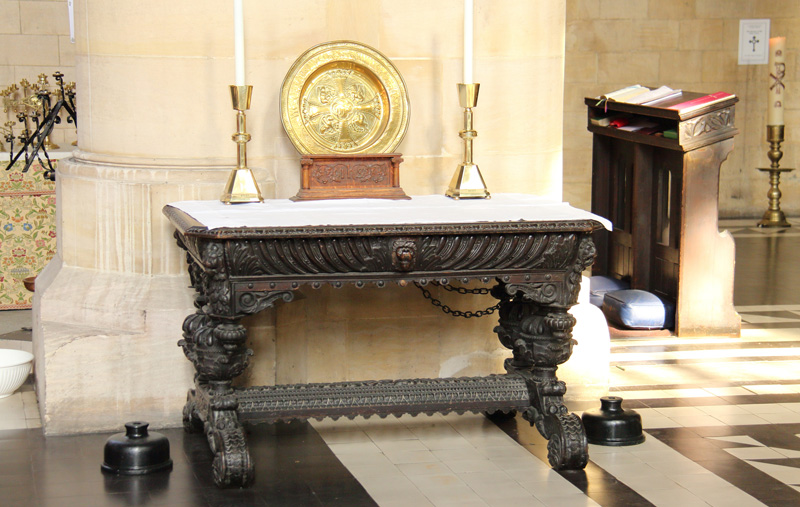
A fine altar table, perhaps an antique one, between sanctuary and chancel. Like many that Cox and Harvey discuss, this one seems to be an antique piece, or reproduction, lending an air of historicity.
Related Material
References
Cox, J. Charles, and Alfred Harvey. English Church Furniture. 2nd ed. London: Methuen, 1909. Internet Archive. Contributed by University of California Libraries. Web. 28 August 2015.
Pugin, A. Welby, Architect. Glossary of Ecclesiastical Ornament and Costume: Compiled and Illustrated from Ancient Authorities and Examples. 2nd ed. London: H. G. Bohn, 1846. Internet Archive. Uploaded by the Research Library, Getty Research Institute. Web. 28 August 2015.
Created 28 August 2015